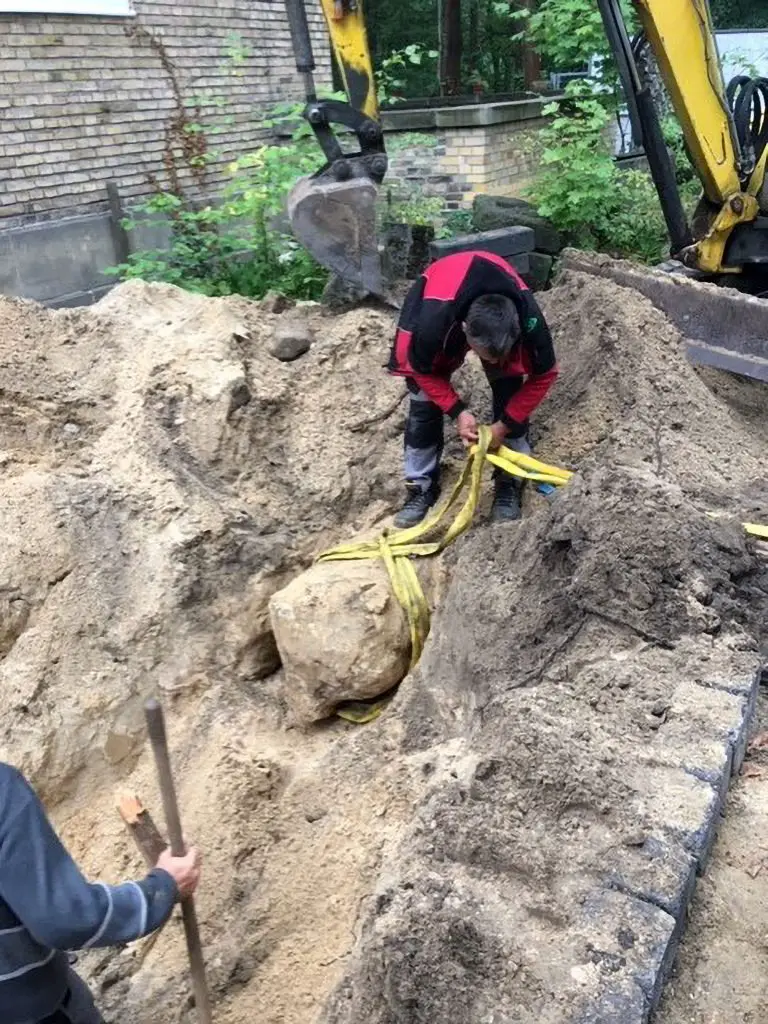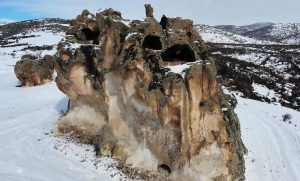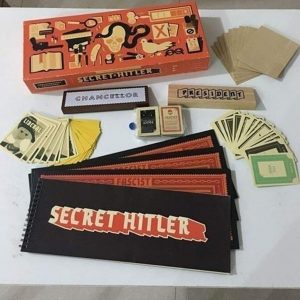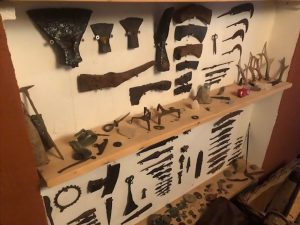Story By: Lee Bullen, Sub Editor: Joseph Golder, Agency: Newsflash
A missing sculpture by one of Adolf Hitler’s favourite artists has been unearthed in a gallery garden during construction work and the gallery thinks the Americans might have buried it there after the war.
The marble sculpture by Arno Breker, a leading artist of the Nazi era, was found during construction work in the garden of the Kunsthaus Dahlem art gallery in the German capital Berlin in August, the gallery announced on 22nd September.
Newsflash have contacted the gallery, which sent a statement saying that “the staff of Kunsthaus Dahlem identified one of the works immediately after the discovery as Arno Breker’s missing sculpture Romanichel (1940). The work exhibits damage, but it must have occurred before they were lowered into the ground. The attribution of the second work and more precise study of the circumstances of the find are ongoing.”

The Nazis initially viewed Breker’s work with scepticism, but towards the end of the war, Hitler and Goebbels put him on the country’s list of ‘Irreplaceable Artists’.
The studio in which the Kunsthaus Dahlem is located today was built for Breker as part of the Nazi’s ‘Germania’ plan to revamp Berlin.
The first sculpture, measuring 90 centimetres in height, has been identified by gallery experts as Breker’s lost work ‘Romanichel’ from 1940 using historical photographs. The second sculpture has not been formally named, the gallery announced on Tuesday.

The piece has sustained slight damage to the head which experts believe was there before being buried.
The similarly designed second figure is also made of white marble.
Both sculptures are on display at the Kunsthaus Dahlem until 15th January.
The gallery also told Newsflash: “Arno Breker, for whom what is now the Kunsthaus Dahlem was built from 1939 to 1942 to use as a studio, worked here only briefly. In 1943, the building had already been damaged by air raids, making continued use impossible.

“After the war, Soviet occupation troops moved into the building for several weeks and from the summer of 1945 it served for a year as an office of the United States military administration. In 1946, the works by Breker that were still on the grounds were transferred to the nearby collecting point at the Voelkerkunde-Museum (Ethnological Museum) in Dahlem.
“It is therefore reasonable to assume that these two sculptures were buried when the American occupying forces were cleaning up the site.”
The ViralTab page is created by and dedicated to professional, independent freelance journalists. It is a place for us to showcase our work. When our news is sold to our media partners, we will include the link here.



